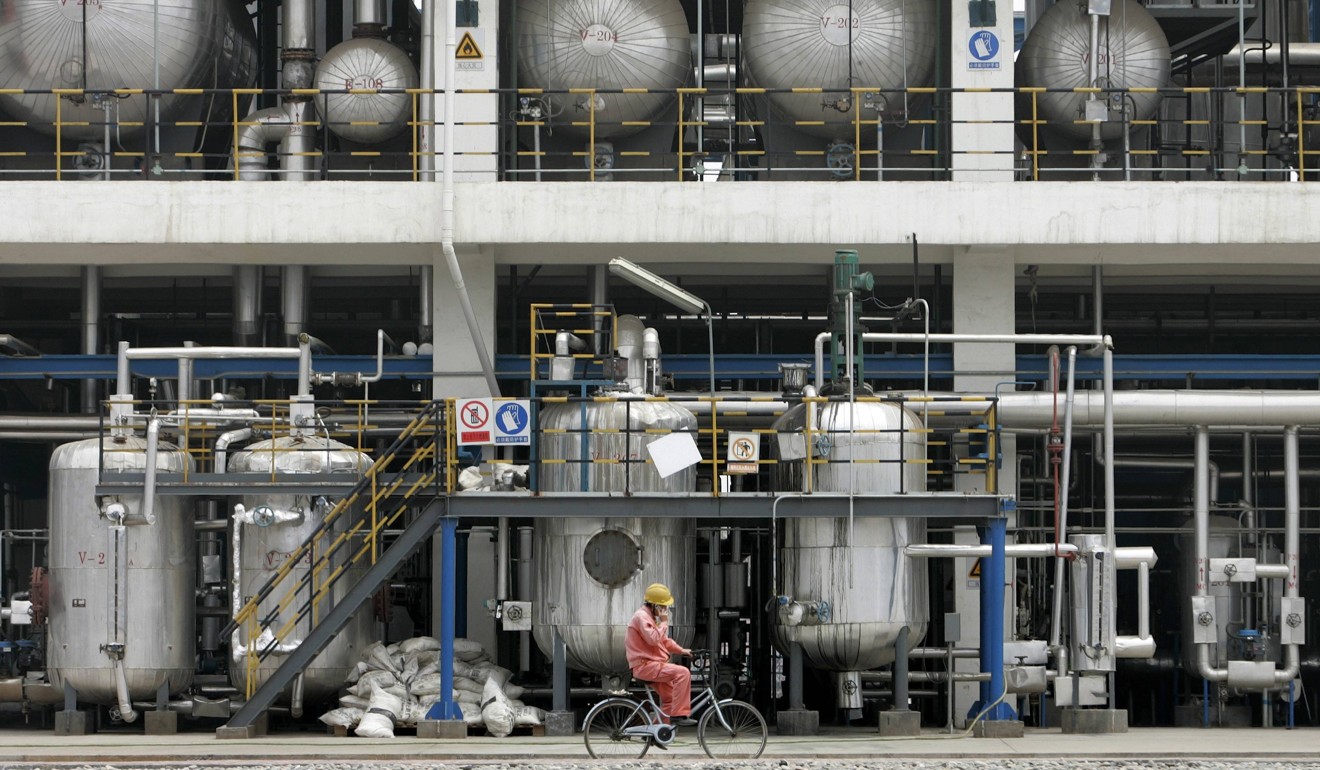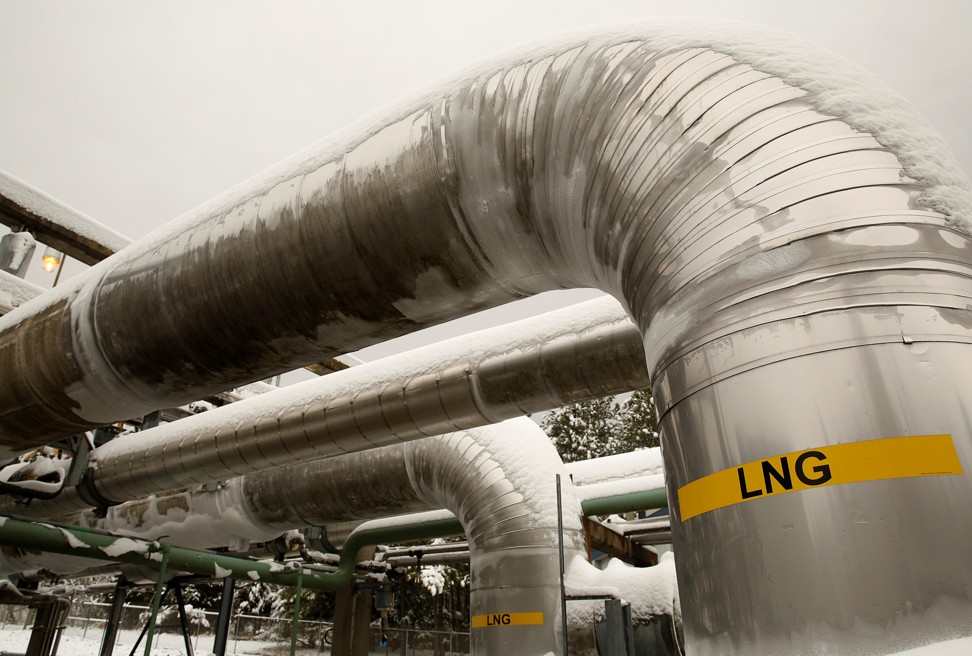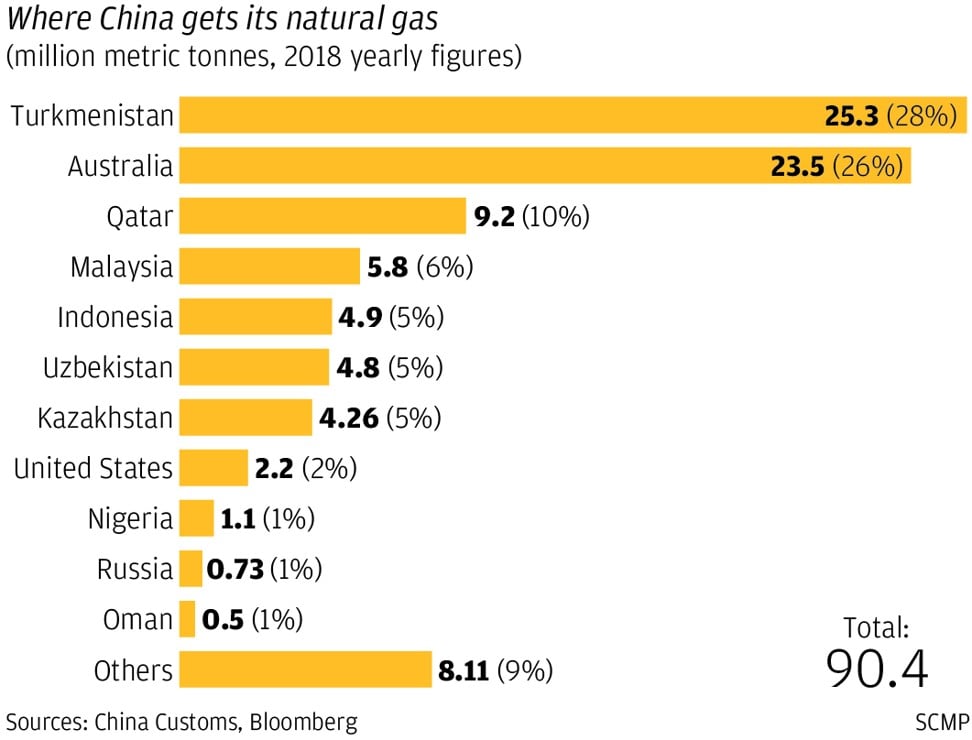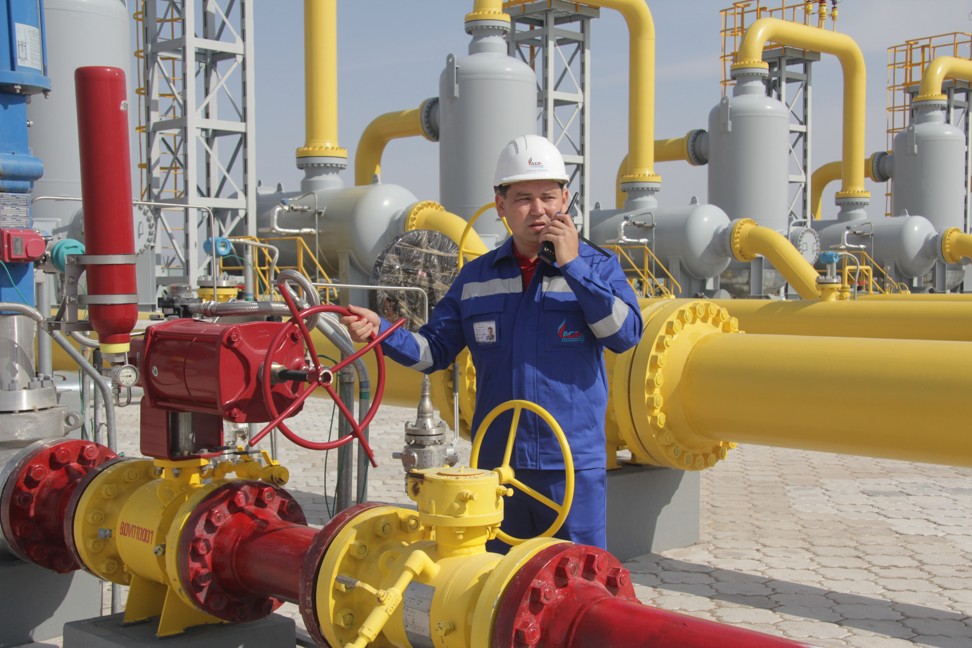In the second in a series on the trade war, we look at why China’s need for energy security makes a deal with the US on energy more complicated than it may seem.
On paper, a healthy energy trading relationship between China and the United States would be mutually beneficial. China is the world’s largest
, while the US is, over the next year, poised to become a net exporter.
These simple facts have led many to suggest that a deal on energy trade would be low-hanging fruit in otherwise testing negotiations to strike a wider accord to end the trade war. But, as has been the case with many elements of the prolonged trade talks, things are not as simple as they seem.
While both nations were highly dependent on foreign energy a decade ago, their fortunes have since diverged markedly.

Furthermore, America is now the world’s third largest exporter of liquefied natural gas (LNG) and has the potential to take the top spot within a decade. Shale gas has allowed it to overtake Russia in natural gas production. The US became a net exporter of the energy source in 2016.
China, meanwhile, is travelling in the other direction.
President Xi Jinping last year called for the country to increase its domestic energy security, which led its state-owned energy giants to allocate the largest investment on domestic drilling since 2016 in the hunt for local natural gas reserves. But the country still relies heavily on energy imports. China overtook the US in 2017 as the world’s largest crude oil importer, underlining the rapid divergence in energy security between the two nations.
In 2018, China contributed 40 per cent of the world’s oil demand growth, according to Neil Beveridge, a senior analyst at investment management firm Sanford Bernstein.
It is also the largest source of natural gas demand growth globally, and could surpass Japan as the world’s largest LNG importer by 2025, Beveridge said in a recent report.
LNG has become particularly important to the Chinese government as it continues its “war on pollution”, declared by Premier Li Keqiang at the National People’s Congress in 2014, when he told 3,000 delegates: “[Pollution is] nature’s red-light warning against the model of inefficient and blind development. Efforts to protect the environment matter to people’s lives and the future of the Chinese nation.”
demand has more than tripled in the past decade as Beijing looks to reduce the nation’s smoggy skies through an aggressive programme of heating homes and powering factories using gas rather than coal.
This is all unfolding as a backdrop to US President Donald Trump’s demand that China cut its
as part of any trade resolution. It would appear, then, that the planets are aligned for closer energy trading relations.
“Foreign direct investment in China’s energy sector has always been difficult unless it involved the provision of specialist technology not available in China”
“Yes, China and the US are complementary [markets] for crude oil and LNG, but the issue is volume,” said Wu Kang, head of analytics for Asia at the commodities consultancy S&P Global Platts.
“In the absence of the trade war, China has the need and is set to import more from the US and the distance between the two can be largely overcome with the US’ resource abundance and low cost.”
The trouble is, the trade war is escalating, and has scuppered what was a promising, if fledgling, relationship.
US exports of crude oil and petroleum products to China have taken a beating since tit-for-tat tariffs began last July, plunging from 16,890 thousand barrels in August 2018 to just 4,797 thousand barrels in February 2019, according to the US Energy Information Administration.
Among all energy products, LNG has been hit the hardest. China last year imposed a 25 per cent tariff on LNG imports, in retaliation for Washington’s tariffs on US$200 billion of Chinese imports.
In October and December 2018 and again in April 2019, no LNG cargoes from the US arrived at Chinese docks. The US share of China’s total LNG imports dropped to 1.3 per cent in the first four months of this year, well below the 7.5 per cent registered over the same period in 2018 and the 4.1 per cent over the full year of 2018, according to Jenny Yang, a gas analyst with IHS Markit.

The Chinese tariffs made it uneconomical to import American LNG and forced Chinese companies that were already committed to buying US gas to swap their cargoes with traders who could sell them to other markets.
Meanwhile, China is looking elsewhere for energy supplies, with two cargoes of Brazilian crude oil en route to Qingdao by June 24, carrying an estimated 2 million barrels of oil from Petrobras, Reuters reported.
This was despite a push from Trump early in his presidency to use energy as the primary tool for narrowing the trade imbalance between the US and China, against which he raged on the 2016 campaign trail.
So while it may seem to be in China’s interests to strike a deal with Washington on energy, there are certain red lines that may deter it from doing so.
Key to China’s push for energy security is to avoid becoming too dependent on any single source. The small scale of China’s pre-trade war energy imports from the US meant that China was unlikely to become immediately reliant on US energy, but a trade deal could quickly shift the dynamic.
If China were to become a large-scale buyer of US gas through a bumper purchasing agreement, and Washington then decided to turn off the spigot, China’s energy security would be threatened, goes a line of reasoning thought to be pervasive in Beijing.

On the other hand, flexible access to US gas would allow China to diversify from its current leading suppliers. Plus, having ready access to a number of sellers allows it to make purchases at more favourable prices.
“China places a lot of value on security and diversity of supply. New supply from the US would create more competition for China’s market,” Beveridge said. “The strategic question is, to what extent does China want to become tied to the US as one of its large energy suppliers?”
China has plenty of alternative sources for LNG, including Qatar and Australia – currently its largest suppliers – as well as new and emerging suppliers like Russia, Mozambique, Canada and Papua New Guinea, he noted.
China began building a pipeline as early as 2007 to transport natural gas from the fields of Turkmenistan to Shanghai, with the capability of delivering 55 billion cubic metres of gas a year, or 57 per cent of China’s 2010 demand, over 7,000km (4,350 miles). The final phase of the project began work in 2014.
This view on diversification is backed up by energy watchers in Beijing. Wang Yongzhong, a senior fellow with the Chinese Academy of Social Sciences (CASS), a government think tank, said that Beijing should not allow its imports of US oil and gas to “exceed 10 or 15 per cent”.
“Were the US to cut off its energy supply, it would have a negative impact on China’s energy security, on the economy and on social stability,” Wang said – a point that percolates through much of Beijing’s economic policy thinking.

In March, China announced plans for a national oil and gas pipeline company, aiming to open its pipeline infrastructure sector to private and foreign energy producers as a way to spur oil and gas exploration. However, a timeline for the new entity has yet to be revealed.
Even so, analysts are sceptical whether foreign companies will rush into this sector, given China’s reputation for weak intellectual property (IP) protection and forced technology transfer – other key US grievances in the trade war.
A survey published this week by the American business news channel CNBC found that almost one-third of North American-based chief financial officers said Chinese firms had stolen their companies’ IP at some point over the past decade, meaning that even if China were to open certain sectors of its market to US firms, some
about seizing the opportunity.



